Inside: Discover the world of a minimalist lifestyle as you learn how to embrace minimalism in design and lifestyle. Discover its benefits and practical tips for a clutter-free life.
In a world full of chaos, minimalism offers a refreshing approach to design and lifestyle. Furthermore, beyond aesthetics, it emphasizes simplicity and mindfulness, encouraging us to prioritize what truly matters. Consequently, minimalist design creates an atmosphere of tranquility by embracing clean lines, neutral colors, and functional furniture. Finally, as we explore the key elements, benefits, and practical tips for achieving minimalism, we’ll uncover how this elegant approach can transform our homes into serene sanctuaries that reflect our values and enhance our well-being.
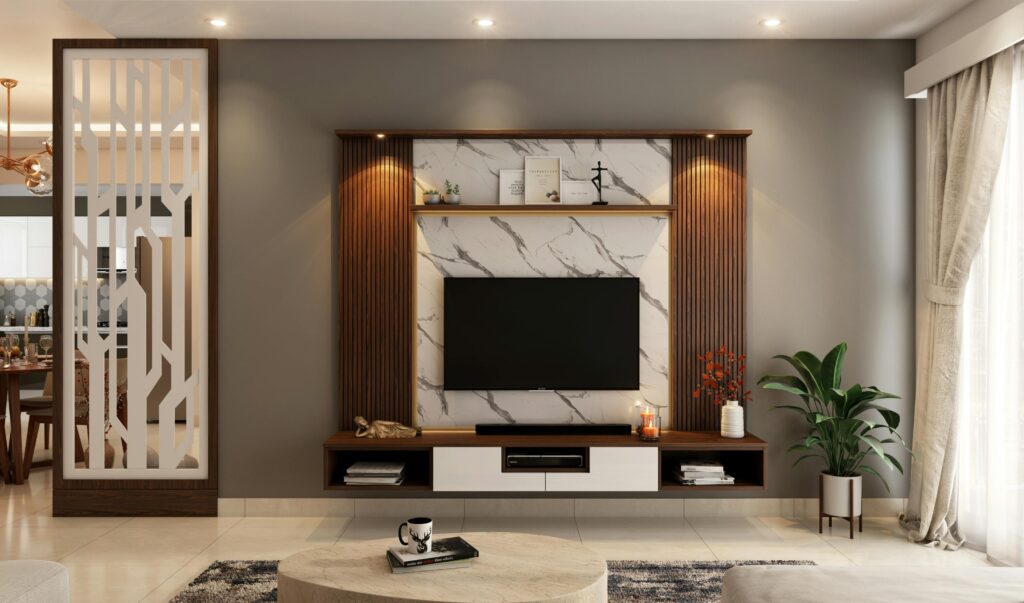
Table of contents
Key Elements of Minimalist Design
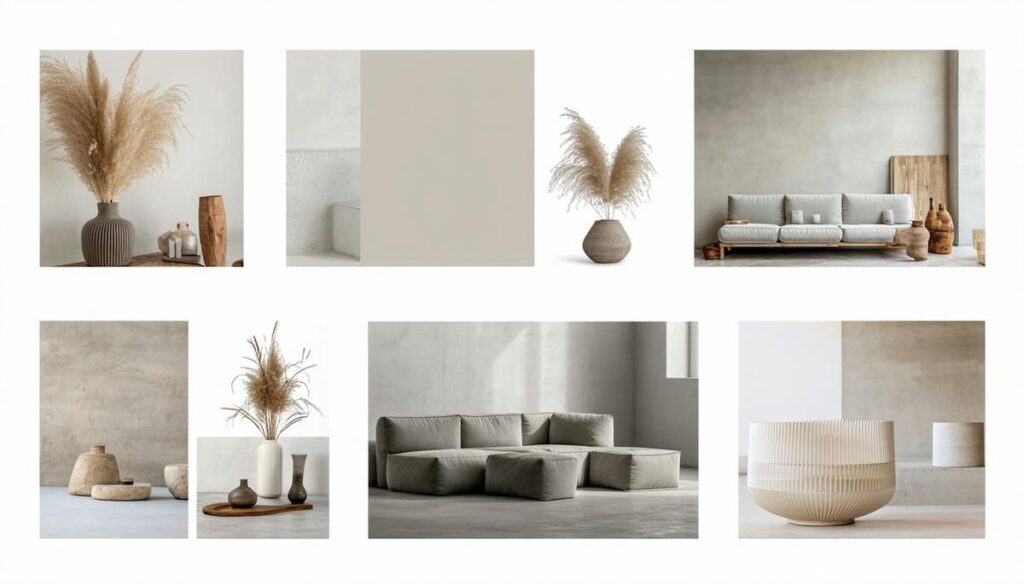
Neutral colors create a peaceful backdrop for your furniture to shine. Specifically, whites, greys, and beiges offer a serene canvas, allowing bold pieces to take centre stage without overwhelming the space.
Clean lines and simple shapes guide our eyes across the room, allowing us to appreciate form and function without unnecessary clutter. This creates a sense of order and tranquility.
The ‘less is more‘ mantra reminds us that simplicity brings calm. Each piece should have its place and purpose, creating an airy room where every item matters.
Natural materials like wood, stone, and woven textures add warmth and depth without fussiness. Moreover, these align with minimalist values of sustainability and intentional living. Additionally, live plants or handmade items can add a touch of vibrant life.
Functionality is key in minimalist spaces. Everything serves a purpose – nothing is just for show. Multi-purpose furniture is beneficial, keeping the space tidy and purposeful.
Natural light through clear windows makes spaces feel airy and light. Light-coloured curtains and thoughtful lighting fixtures add character while maintaining simplicity.
Embracing negative space creates breathing room and a canvas for relaxation. This uncluttered calm can be a balm for busy minds.
Minimalist design reduces excess while amplifying essentials. It invites us to rethink our choices, value what we have, and enjoy a stylish and serene home.
Benefits of Minimalist Interiors
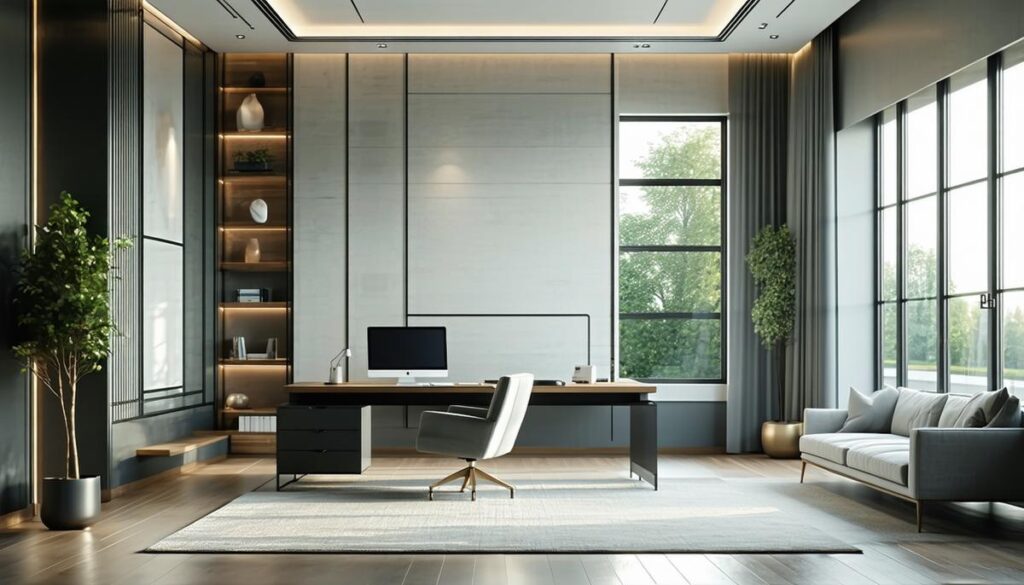
Living in a minimalist space often feels like finding a shortcut to serenity. By reducing visual noise, your home becomes a soothing environment that promotes calm and focus.
You’re more likely to harness mental energy for what matters without clutter vying for attention. Whether tackling a creative project or enjoying a good book, distractions fade away, leaving you to concentrate on the task.
Minimalism encourages mindful curation of possessions. It’s an exercise in thoughtful consumption – choosing high-quality, lasting pieces and incorporating natural materials. As a result, this approach often leads to reduced consumption and a smaller environmental footprint.
Beyond design, minimalism is a lifestyle that promotes peace and productivity. It offers the luxury of simplicity, guiding us towards a slower, more intentional way of living. While the world outside may be hectic, your minimalist haven remains a calm, purposeful retreat.
Expert Tips for Achieving Minimalism
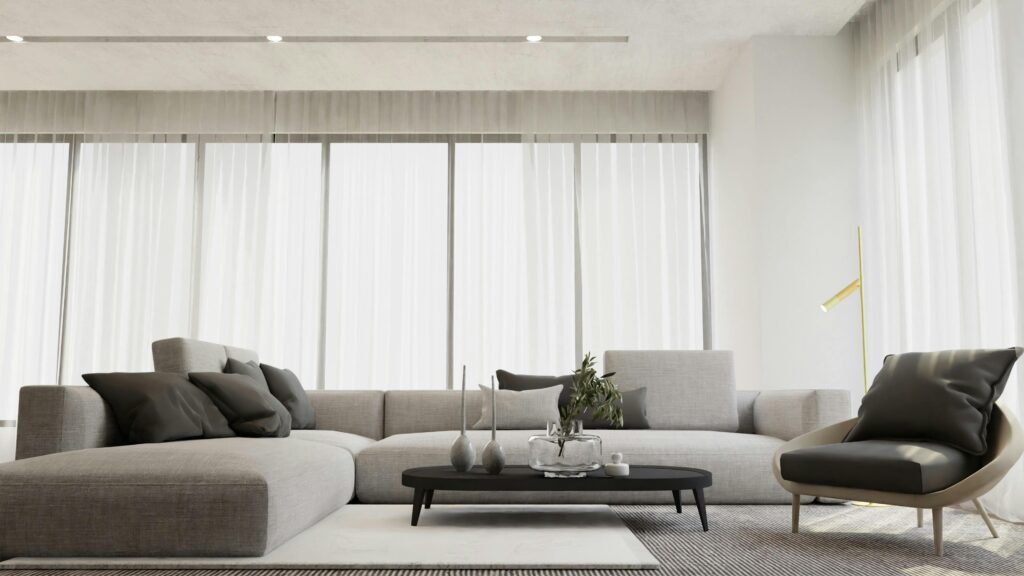
- Declutter: Start small, tackling one room or drawer at a time. Consider whether each item adds value to your space or takes up space.
- Invest in timeless pieces: Choose quality items that serve multiple functions. These enduring pieces ground your space in classic elegance while proving practical over time.
- Embrace negative space: Leave some areas bare. This gives the eyes a place to rest and allows your home’s story to unfold without clutter.
- Experiment with layouts: Create walking paths between pieces to give your home an open, unconfined feel.
- Choose natural materials: Wood, stone, and textiles provide warmth without overwhelming the senses.
- Reflect your style: Display cherished art pieces, handmade items, or family photos with significance. This transforms minimalism from mere functionality into soulful storytelling.
Minimalism invites you to live intentionally, mindfully curate your possessions, and enjoy simplicity. With these expert insights, your home can strike a harmonious balance between elegance and comfort while remaining authentically you.
Minimalism in Modern Context
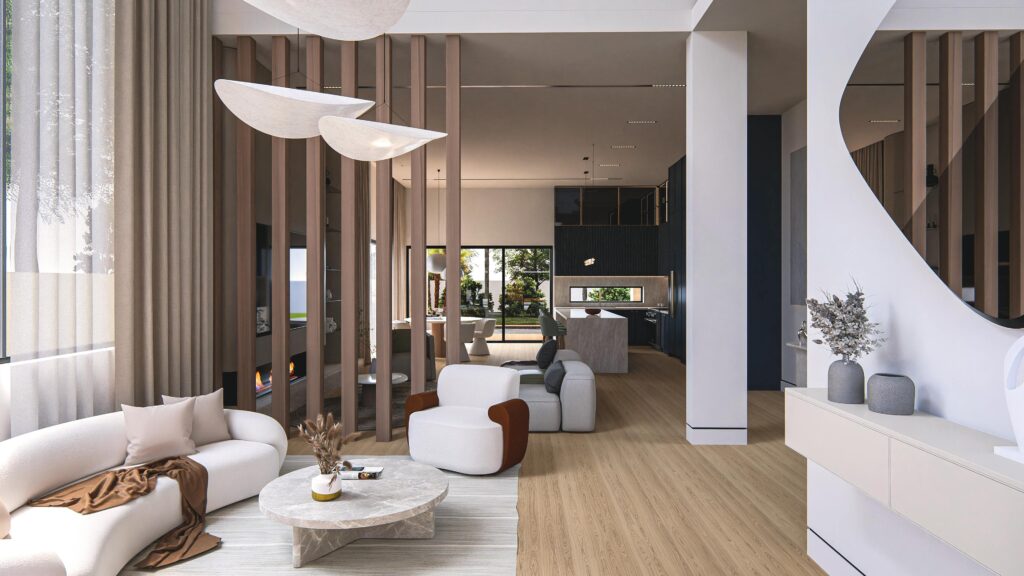
Modern minimalism blends restraint with warmth, creating stylishly sparse yet inviting spaces. This ‘warm minimalism’ reflects a broader cultural movement embracing mindfulness and well-being.
Today’s minimalist spaces breathe life through:
- Textured fabrics
- Earthy hues
- Organic materials
There’s a greater emphasis on blending personal style into minimalism, allowing cherished items to tell your story within an uncluttered backdrop.
This approach aligns with sustainable living, often featuring eco-conscious materials like wood, stone, and wicker. It highlights a collective desire to reconnect with nature and create environments that echo the quiet strength of the outdoors.
The trend also reflects a move towards curated living – thoughtfully selecting what to treasure and finding joy in intentional choices. This reduces unnecessary clutter and elevates our living spaces into soothing sanctuaries of purposeful design.
Moving forward, minimalism will continue to be a platform for personal expression through intentional design. It’s about creating spaces that aren’t just lived in but truly resonate with our values and offer comfort, peace, and room for life’s essential moments.
Minimalism offers a refreshing perspective on living spaces, inviting us to embrace simplicity and purpose. As a result, we create environments that nurture peace and authenticity by focusing on what truly matters. Indeed, this approach encourages us to cherish the essentials, fostering a sense of calm and clarity in our daily lives.
Ultimately, minimalism reduces clutter and enriches life through mindful choices and a genuine appreciation for simplicity.

Leave a Reply